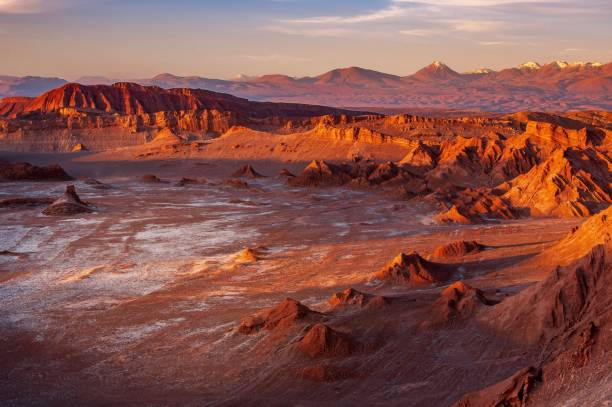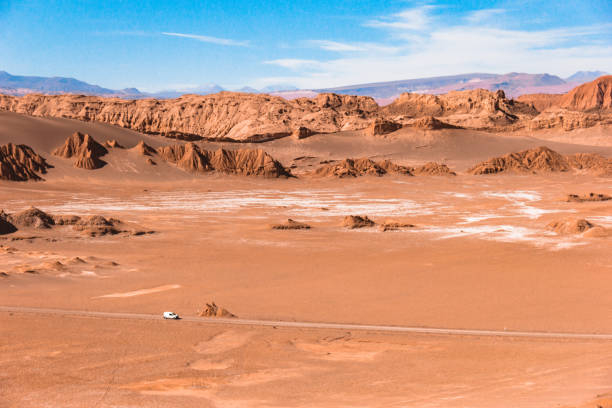Atacama Desert, South America
The Atacama Desert is a desert plateau in South America that stretches for 1,600 kilometers along the Pacific coast, west of the Andes Mountains. The Atacama Desert is the world's driest nonpolar desert and the second driest overall, behind only certain very particular locations within the McMurdo Dry Valleys, as well as the only hot genuine desert that receives less precipitation than the polar deserts and the world's biggest fog desert. Both locations have been utilized as test sites for Mars mission simulations on Earth.
The desert owes its high aridity to a continual temperature inversion due to the chilly north-flowing Humboldt ocean current and to the presence of the powerful Pacific anticyclone. The Atacama Desert's most dry region is sandwiched between two mountain ranges (the Andes and the Chilean Coast Range) of sufficient height to preclude rainfall advection from either the Pacific or Atlantic Oceans, creating a two-sided rain shadow. Despite modern perceptions of the Atacama Desert as completely devoid of vegetation, a large flatland area known as Pampa del Tamarugal was a woodland in pre-Columbian and colonial times, but demand for firewood associated with silver and saltpeter mining in the 18th and 19th centuries resulted in widespread deforestation.
Despite the desert's geographical and climatic limitations, a diverse vegetation has emerged. Within the desert's boundaries, over 500 species have been collected. These animals are distinguished by their exceptional capacity to adapt to this harsh habitat. The most prevalent species include herbs and flowers like thyme, llareta, and saltgrass (Distichlis spicata), as well as trees like chaar (Geoffroea decorticans), pimiento tree, and leafy algarrobo (Prosopis chilensis).

















